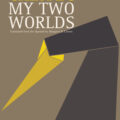Kafka’s Bestiary; or, Regarding a Remark of Adorno’s Never Said

“Auschwitz begins when one looks at a slaughterhouse and says, ‘they’re only animals’.” This quote is attributed to Theodor W. Adorno.
Except he never said it.
Despite this, at least two reasonably reputable sources attribute the quote to him—The New Scientist and the Los Angeles Times. One can demand better of the press, but the mistake is understandable. The quote is somehow half in Adorno’s voice and half out of it; one only barely familiar with Adorno may find it plausible he said it. It does adopt his language. Adorno used Auschwitz as a stand in term for the holocaust and often spoke of “after Auschwitz.” At the same time, it is unlikely Adorno would ever voice a phrase like “they’re only animals,” even if he was putting words in the mouth of a theoretical interlocutor.
The quote is uncanny then, something we can imagine Adorno might say in the midst of a crippling fever or whilst possessed by an alien parasite. I do not know if it’s a case of misattribution—said by someone else, attributed to Adorno—or fabulation.
Let us, however, not ask “did Adorno say this?” It’s an uninteresting question with an uninteresting answer. We should ask instead, “Could Adorno have said this?” Is this misattribution in line with his thought? The path to an answer runs through the world of Franz Kafka and Adorno’s reading of Kafka.
Why Kafka? In Kafka we find the triangulation between the modern world, the holocaust and animal ethics, and Adorno displays, in his reading of Kafka, a glint of this sentiment, of the link between these horrible moments of the modern world. Examining this question may shed light on the vexing problem of ethics, animal and otherwise.
There is an almost accidental clue to the importance Kafka plays here, a simple sentence at the end of English scholar Idris Parry’s preface to the 1997 edition of Franz Kafka’s The Castle.
In it, he makes much of Kafka’s letters to his lover, Milena Jesenská. Parry highlights Kafka’s own remark, “I think I understand the Fall of Man better than anybody else.” Yet Parry will betray this interpretation, or his editors will. At the end of his introduction, there is a note, sitting beneath Parry’s sign off, before the turn of the page, stuck in by an anonymous editor.
This note strikes an unsettling chord that rings out across the text to come. It says, simply: “Milena Jesenská died in the Nazi concentration camp at Ravensbrück on 17 May 1944.”
Kafka’s world is coextensive with the world of the Third Reich. Although he died before the final solution, Kafka lived through that historical moment, and it inflects his writings. Parry quotes Kafka, “I am my stories”. For Parry, this is an argument for Kafka the existentialist, the theologian. His stories are of man, of a fallen man in world of fear. And what man was more fallen than Kafka?
Yet Kafka is also a concrete historical individual. Parry does not ask what the source of this fear is. Perhaps he assumes it is nothing more than the mere fear of existence. It is Walter Benjamin who will locate this missing concrete dimension:
What I mean to say is that this reality can virtually no longer be experienced by an individual, and that Kafka’s world, frequently of such playfulness and interlaced with angels, is the exact complement of his era which is preparing to do away with the inhabitants of this planet on a considerable scale. The experience which corresponds to that of Kafka, the private individual, will probably not become accessible to the masses until such time as they are being done away with.
Kafka’s writings are extension of himself, but only in so far as he himself is located in a socio-historical context. This, I assume, is unobjectionable. This context, however, is the context of a world which is leading itself towards annihilation, towards the Holocaust.
Benjamin and Adorno shared the notion that Kafka had some sense of the horror that would engulf Europe. There is risk that such a claim invites incredulity and treads heavy on the gravitas of the Holocaust. However, to treat the Holocaust as unanalysable, unsayable, or unrepresentable is to assume a rhetoric of moral seriousness that is, in fact, deeply unserious. To disentangle the cause and effects, to understand this event as part of the world, to understand the conditions and contingencies that lead to it and to understand other events that may be akin, this is what it means to take such an event seriously.
If we understand Kafka’s world as a world that is disenchanted, we see no surprise in his inkling of this world to come. Kafka’s world is disenchanted in so far as it is a world of rules, of bureaucratic rationalisation that is yet somehow deeply inhuman. This disenchantment for Adorno is continuous with the Holocaust, as Jay Bernstein notes: “[For Adorno] the disenchantment of the world is fully realized in Auschwitz as a concrete historical event.”
There is, for Adorno, a line from the disenchant world of the early 20th century through to the events of the Holocaust. If Kafka’s world is reflection of the former, then it connects with the latter.
The word Kafkaesque is often used to refer to an impossible bureaucracy. One whose rules remain opaque, where one is denied at every turn, where one’s reason fails as it comes into conflict with an inscrutable order. This misses the essential aspect of Kafka here: failure and inaction. This inaction is not due to apathy, a lack of will. This inaction is failure, failure of action. Kafka’s protagonists act, but to no avail.
Consider, in The Castle,K’s attempts to get into contact with the Castle’s official Klamm. He plans to intercept Klamm as he gets into his carriage to travel from the inn to the castle, yet Klamm never shows. The passage proceeds in typical fashion:
The wait was longer than K. had expected. He had long since finished eating, it was bitterly cold, dusk had given way to total darkness, and still Klamm did not come. ‘Could be a while yet’, a rough voice said suddenly, so close that K. jumped. It was the driver, who was stretching and yawning noisily, as if he had just woken up. ‘What could be a long while yet?’ asked K., not ungrateful for the interruption, because the continual silence and suspense had been tedious. ‘Before you go away,’ said the driver.
It is indeed a while before K. goes away, but Klamm never arrives, and all the lights at the inn go out, and the driver retires for the evening. K.’s plan, to intercept the court official Klamm, fails. It fails because there is a logic and machination that is beyond K. This is indeed the defining feature of The Castle. Yet we must be careful not to call this nonsense, as Parry does:
The Castle is nonsensical by rational standards. This is Kafka’s way of saying reason is not enough. He has told us through Milena that he is always trying to explain the inexplicable. But he ever explains. In The Castle he makes no attempt to persuade the reader that events should follow like this. We are given a picture and told in effect: ‘this is how it is.’ The absurd is presented with such assurance, fantasy made so precise, that we are moved to follow as if by a law of induction.
This sinister system is not irrational in a simple sense. It is a system of rules, the rules themselves inscrutable. There are strange affects in Kafka’s world, dilations of time and space, but they are consistent across his universe. Space is warped as much in The Castle as it is in Amerika. The assistants in The Castle—gangly, strange and disconcerting—belong to a character type not so different from Robinson and Delmarche. These rules, consistent but absurd from the outside are the rules of bureaucracy, modernity and disenchantment. They are an echo of, for Kafka and his contemporaries an unimaginable horror to come, and for us a horror that has occurred. An echo of Nazism. As Adorno writes:
Kafka’s method was verified when the obsolete liberal traits that he surveyed, stemming from the anarchy of commodity production, changed into the forms of fascist organization. And it was not only Kafka’s prophecy of terror and torture that was fulfilled. ‘State and Party’—they meet in attics, live in taverns, like Hitler and Goebbels in the Kaiserhof, a band of conspirators installed as the police. In The Castle the officials wear a special uniform, as the SS did—one which any pariah can make himself if need be.
The world of Kafka is one where distance and proximity are blurred together. In The Castle K. is close, ever so close to the Castle, yet it is also always far away. The officials come down to the Inn, but Kafka can only really meet with them if they wish so. In The Trial Joseph K. is constantly meeting those who are entangled with the very system that has accused him, and meeting those who know of his tribulation, yet he is also always infinitely far from effecting any outcomes.
It is worth keeping this question of proximity and distance in mind when we consider the question of inaction as pertains to the Holocaust.
In J.M Coetzee’s Elizabeth Costello the titular character gives a lecture, one on the lives of the animals and she starts with the question of inaction during the Holocaust.
“The people who lives in the countryside around Treblinka—Poles, for the most part—said that they did not know what was going on in the camp; said that, while in a general way they might have guessed what was going on, they did not know for sure, said that while in a sense they might have known, in another sense they did not know, could not afford to know, for their own sake.”
Here the refusal to know, even though one could know, is to turn away, is to take inaction. Yet the question of inaction is not as straight forward as we would like. The immense and saturated system of The Third Reich did not make action impossible, but it did make it knotted and thorny, and it did make detecting its result more difficult then we would like to admit. As Hannah Arendt noted in Organized Guilt and Universal Responsibility, conceptualising resistance to Nazism runs into difficulties if resistance had to remain convert and quotidian by necessity.
Perhaps we can recall here the protagonists of Hans Fallada’s Alone in Berlin, Kafkaesque in their dual qualities of being both heroic and useless. This paradox is generated by this factor of proximity and distance, it confuses the issue of how to act, how to act effectively, how to act decisively. These questions of action and inaction belong to the world of Kafka, of a world where the inscrutable rationality of some impossible to get to system appears as its opposite, as total irrationality.
In focusing on how this machinery of terror—one which we glimpse through the keyhole that is Kafka’s novels—crushes not just opposition but action we can illuminate, I think, questions of animal ethics today. And in order to this, we must first understand what role animals play in Kafka’s universe.
Outside of Kafka’s novels, animals abound. Not only the infamous Samsa-cum-cockroach but the investigative dog, the unnamed burrowing creature, the singing mouse Josephine and many more. There is anthropomorphism and zoomorphism both. The effect of Kafka proceeding in both directions is one in which human subjectivity is removed from its unique place and blurred into the realm of animal subjectivity.
In Kafka’s story The Burrow an undefined burrowing creature obsesses over its burrow, until one day it hears a strange whistling noise. It tries, unsuccessfully, to locate the source of the noise, and realises that it is the same volume everywhere. What can the source of this noise be? A strange and malevolent beast? The intrusion of the outside world?
Mathew Abbott, in his discussion of The Burrow, reads this noise as emanating from the creature itself. Abbott then reads his reading back into the one Max Brod himself suggested, that The Burrow, Kafka’s penultimate story, is a story of Kafka’s illness. Kafka use to call his cough “the animal,” but what this cough ultimately represents is, in Abbott’s words, “the return of the fact of biological existence itself.” Abbott reads this story as story that puts the animal, the natural, back into man.
Yet this story also humanizes the animal, investing this creature with paranoia, with a madness for the home that is thoroughly human. John Locke amongst the badgers.
This collapses the distinction between animal and human life. Animals and humans, after all, occupy a similar world. As Adorno writes: “Instead of human dignity, the supreme bourgeois concept, there emerges in him[Kafka] the salutary recollection of the similarity between man and animal, an idea upon which a whole group of his narratives thrives.” Contra Benjamin, who sees in Kafka’s animals the one set of figures deserving of hope, Adorno sees them as similar or the same. In an inversion of the old saying “man is wolf to man” Kafka will tells us instead that “man is bug to man” and invert the causation of the cruelty. When animals kill each other they become more human.
“What becomes of a man who is a bug as big as a man?”, Adorno asks. Kafka’s answer is that the bug is submitted to the rules of exclusion. These are the rules of human society. The fate of Gregor Samsa is typically read as parable. Yet, as in much of Kafka, it proceeds with a chilling literalness. If the story were not a metaphor but simply an exploration of Adorno’s question, it would still work: we treat men as bugs and bugs as men. We are close to animals, yet we have pushed them thoroughly out of our world: distance and proximity.
This structure of distance and proximity is itself the dynamic of alterity. When I speak about the “Other,” especially in the context of race politics, I am speaking of something that is both obviously part of my world—another human—and that is also being driven out. They are close, in that we belong together, and yet distant, in that I push them into a liminal and exceptional category: that of the barbarian, the criminal or the Other.
Kafka’s Metamorphosis is a story in which this distance, this alterity, transforms into proximity. The animal appears, human-sized, within the space and spectacle of domestic life. This is how the story opens, and the rest of it follows as the attempt to recreate this distance.
Tellingly, in his essay on Kafka, Adorno writes: “The zone in which it is impossible to die is also the no-man’s-land between man and thing.” This zone is part of Kafka’s world, a world in which man takes on the aspect of a thingness. In Kafka’s tales what is most important is not that men turn into bugs but rather that men and bugs and bug-men alike fade into the background, find themselves robbed of agency and subjectivity. Everywhere, they fall back into a kind of thingness, as objects of forces and laws. And this state of thingness, this state of non-death, remerges in Adorno’s analysis of Auschwitz. As Bernstein writes:
“Adorno construes the expropriation of death that occurred to individuals in Auschwitz—their death removed as their own because their “administrative murder” involved the systematic elimination of any “ownness”, any individuality—as reverberating on the concepts and categories through which we attempt to comprehend it. The idea that a death belongs to a life, is tellable in relation to it, is part of the categorical syntax through which processes (life) and result (death) are connected…”
In those moments where Kafka’s characters, under the pressures of a regime whose logic is inscrutable and unchangeable, are transformed into things, they are pushed into no-mans land. They enter the world where death is both omnipresent and suspended. As Adorno writes in Negative Dialectics: “The administrative murder of millions made death a thing one had never to fear.” Gregor Samsa does not so much die as disappear, indeed Kafka uses this phrasing himself “the decision that he [Samsa] must disappear was one he held to even more strongly than his sister.”
Adorno does not say that the distinction is between Kafka and animals. It is rather between Kafka and the non-human. Likewise, Ted Geier is wise enough to title his book Kafka’s Nonhuman Form and not Kafka’s Animal Form. And here a deeper secret lies: we belong to the world of nature, the world that includes animals.
This nature confronts us with silence, the infamous silence we attribute to animals—a strange misnomer, animals are incredibly noisy—and we ignore this silence to tear the earth up and devour it. This is the age of climate change, a season where Australia, the world’s largest coal exporter, has been set ablaze by the hubris of man. All of nature is an object to be exploited and humanity is no less a part of that nature. If we take the step to say that what we are doing to animals is industrialized slaughter akin to the Holocaust, then why not take the step further and say we are putting nature through the rigors of industrialized slaughter, a cleansing from which we will never recover.
Everywhere control over this planet and this fate of ours seems close, it seems you and I, and what we eat and drive and do affect this. We are so close to the source. We re so far away, as the levers of power and change remain guarded. We are an impossible distance away. There are mechanisms we cannot move. It’s a distance betrayed by seeming proximity.
Everywhere I am surrounded by nature, in it and amongst it, and yet never have I been further away; Marx’s metabolic rift becomes a principle of divide and conquer. And what is conquest without annihilation, without slaughter?
The logic that leads to the Holocaust is a logic present in the world, a world whose depths Kafka charts. This logic is tied intimately to the question of animals and animality. When we understand that we inhabit the same world as these creatures, that there is no hope for them, then we see the architecture of the Holocaust as part of the architecture of the slaughterhouse. The process of thingness, of proximity and distance, is a process that is part of the modern world, a modern world for us to encapsulates the slaughterhouse and the Holocaust. These worlds are coextensive, and it is only because History is an ironist that Hitler was a vegetarian.
This brings us, briefly, back to the question of inaction. Just as those who knew camps existed in Nazi Europe did nothing, so to do we do nothing about the question of the slaughterhouse. And if our fellow humans were to transmogrify into animals tomorrow we would gladly send them off to be slaughtered. But we are gripped by inaction because this world of the slaughterhouse is the world of proximity and distance. That was the world of the Nazis, that is the modern world. This sense of proximity and distance captured again by Coetzee in Elizabeth Costello when the titular character says, during a lecture in Waltham:
“I was taken on a drive around Waltham the morning. It seems a pleasant enough town. I saw no horrors, no drug-testing laboratories, no factory farms, no abattoirs. Yet I am sure they are here. They must be. They simply do not advertise themselves. They are all around us as I speak, only we do not, in a certain sense, know about them.”
Just over the hill lies the slaughterhouse, the camp. Yet the distance over that hill is impossible to cross, a distance that is Kafkaesque. What we might find if we make it over there may not be Josephine the singing mouse, who reminds us of more innocent times, but a horror from which we shall never recover, a despair that eclipses reason itself.
About Duncan Stuart
Duncan Stuart is an Australian writer living in New York City. His writings have appeared in 3:AM Magazine, Overland Journal, Cleveland Review of Books and Demos Journal. Find him on twitter @DuncanAStuart





